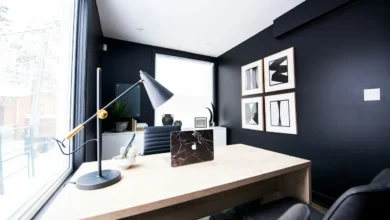Nett helps Sydney courier Mark Passey of Motion Messengers grow his 18-month-old business.
Mark has steadily grown his Sydney courier business all by himself, now he wants to take the next step: providing a premium service targeting high-end corporate clients.
1: Know your points of difference
Naomi: Where are you now and where do you want to be?
Mark: I want to position Motion Messengers as a
premium brand. After speaking to my customers, I know they’re willing to pay for better service. My plan is to target niche markets, where the major players have limited penetration. Within two years, I want Motion Messengers
to be the couriers of choice for major companies who value service and presentation. I see us as setting the industry benchmark.
Ruby: You need to sit down ask yourself, “What is unique about my brand?” It’s a strategy that will help take you through the entire business process: “We’re going to be known as a great courier service that everyone loves.” Don’t forget – it’s about the service, not about what’s being delivered. Once you establish your points of difference, it’s going to make things a lot easier for you to when creating website copy and all your other collateral, your recruitment messages, forming your culture, and all that kind of thing. I notice that you say you’re carbon-friendly, that’s a good point: it should be on the back of your van somewhere.
Mark: Yeah, it’s going to be. And on the website.
Ruby: And don’t forget the business cards.
Mark: I noticed no one else was doing it. When I tell them, my customers say, “Really, wow, that’s really good!”
2: Plan your website
Jonathan: Do you have a Motion Messengers website?
Mark: I do, but it’s shocking! I’ve done nothing with it for six months. It just sits there for web rats to crawl over.
Jonathan: I doubt they’re even looking at it because there’s not much to crawl over. If someone does find it, it’s not what you want them to see, so I’m hoping they haven’t!
Ruby: What you could do in the meantime is to leave just one page there with your brand, a short blurb about what you do, your key selling points, and a contact phone number and email, so at least it’s working for you you you that click. Mark: That’s a really great idea. I didn’t think of that. Jonathan: It’s important your web presence evolves, alongside everything else – especially if it’s appearing on your business cards. These days, people will tend to go
to the internet first, when trying to find local products and services – it’s the first place I’d look for a courier.
Naomi: Where should Mark begin with the website?
Hilbert: If you have a limited budget, keep it simple from a brand perspective. You need to try and capture the essence of your brand message.
Ruby: A website should reflect your brand, your brand positioning, your personality – all those things. It’s also the way you’re going to connect with your market, and should say in two or three seconds, “I’m great, contact me.”
Jonathan: That kind of thing’s really important. You really shouldn’t try and compromise too much on style, because that will affect your image. And the higher you try and pitch your business, the more important that becomes.
Ruby: Your budget will direct everything. Most of the template sites should cover your look and feel. You need to work out your key messages early because then you can keep the same voice, but evolve it as you grow. Stick to that initial message: this is who I am, this is what I do.
Hilbert: Later down the track, when business is booming, you can reinvest and get a slicker site. Have someone professional do it for you. For now, it’s a stop-gap measure.
Jonathan: I hear you’re planning to add GPS tracking?
Mark: Yeah, just to keep up with everyone else.
Jonathan: Even though that might be a way down the track, it’s worth bearing in mind as a direction you eventually want to go. Although you don’t need that now, the website you design should be adaptable later on. You don’t want to have to rip up everything and start again.
Ruby: It’s all about time, too. Where do you want to spend your time? Where is it best spent in your business?
Mark: My time is best spent acquiring new customers. However, I do recognize there is more than one way to do this and that I need to step back sometimes to explore new ways of growing the business.
Jonathan: Quite right. The intention of a website is to help you acquire those new customers in the first place. If you create a simple enough website, it can more than take care of itself while you do things. Write it to generate inquiries. If it gets clients on the phone, it’s done its job.
3: Train your staff
Mark: Finding good staff can be difficult. I know what I want: intelligent couriers who can think on the road and solve problems, and who are also courteous and helpful. It’s hard to find people with all these qualities.
Jess: When you’re hiring someone new, make sure you’ve got that list with you and try to tick off as much of it as you can. If you’ve got a good feeling and an instant rapport with someone, that’s significant, because your clients are likely to get that good feeling from the person as well.
Hilbert: Do you give your drivers training?
Mark: Yeah, I usually spend a day with them. I stress that there are at least 380 courier companies in Sydney and that to compete, we need to provide a better service. I talk them through what to do when a delivery goes wrong, what to say when you turn up, and how to behave in the shop…
Hilbert: I think it would probably help to implement regular refresher courses. With time, everyone tends to form bad habits and take shortcuts.
Ruby: That’s also part of the culture you’re forming around who you are. It gets reflected in your brand. It’s an internal culture you’re trying to create, where people do these things because they’re proud of the company.
Mark: I’m trying to give them ownership over their day-to-day tasks. Sometimes I give them deliveries and say, “You guys can work it out, just do it the best you can.”
Ruby: Sure, but there comes a point where you need to lead. You need to set the tone. Creating a corporate culture starts from the top down. Keeping it flat like that is all very well but at a certain point, they’ll start to create their own ton. You really need to take the lead.
4: The walking billboard
Jess: Statistically, first impressions are formed within seconds. So it’s really important when you’re going into a place to present yourself in the best light. You literally have seconds to do that, so I’m curious to know what your procedure is when you’re cold calling.
Mark: Well, I tend not to be too serious. I go in with a bit of confidence, which I didn’t have at the start. It was bad at the start, but now that I can drop a few names, I go in with more confidence, and usually within 10 minutes or so, I’m talking with everyone in the office. I normally just ask, “Which courier service do you use?” Then I tell them I’m the owner of my company and I give them a card.
Jess: It’s really important to walk in with that confidence, make eye contact, and introduce yourself straight away. Maybe a handshake would be good, or even just a nod of acknowledgment, but it’s really important to draw people into you, to let them know who you are and why you’re there. It’s great that you ask who they use, but introduce yourself before you say that.
Jess: You said your uniform was black?
Mark: Yeah. It used to be red, but since I changed it, I’ve noticed a difference in my interaction with people since I’ve been wearing black instead.
Jess: One thing about black, it does look sleek. It might be worth thinking about head-to-toe black rather than just the T-shirt. Right now, you could be anybody walking in. A complete uniform looks really sharp.
Ruby: Since you don’t have any money for advertising and marketing, or much time, your van and the walking billboard on your back are very important. Your van should have your company name and web address on it. And you should have the website on the back of your shirt because as soon as you walk out, people are going to ask, “Who was that? And there it is motionmessengers.com.au.”
5: Keep it clean!
Naomi: What about Mark’s couriers? Any tips for them to make a really good first impression?
Jess: Well aside from a sleek uniform and a nice opening, it’s really important to consider… I know some couriers arrive and they’re puffing, they’re on a bike and sweating, then they rush in and dump something on a desk…
Ruby: Exactly, let’s talk about personal hygiene.
Mark: We’ve all got airconditioned vans, that’s one thing, no sweaty couriers!
Jess: But if you’re shaking someone’s hand or presenting something to someone in person and you’ve got dirty hands if you’re wanting to offer this elite service, it’s really important to always look the part. Perhaps they could carry a packet of wet wipes?
Ruby: And no Lynx body spray!
Jess: I would say clean-shaven and a nice hairstyle. Nothing too long or too short. Keep your wardrobe uniform, make sure shirts are tucked in, things like that.
Mark: I used to hate it when I worked for companies and they always told us to tuck everything in.
Naomi: Yeah, but when you’re marketing yourself as premium and want blue-chip clients, it really makes a difference. If someone comes in and you can smell them, and their shirt is untucked… that stands out. This is the corporate world and they will notice.
Jess: When couriers look disheveled, you automatically think, “Are they reliable?” even though the courier may have almost got himself killed getting there.
Hilbert: It goes back to the whole idea of not being like anyone else. All the other courier companies have people like that working for them, so you need to be able to say, “This is what other people are like, but I’m different.”
Ruby: Start with the easy stuff. Hygiene, neat uniform. If it’s all black, you won’t need to worry so much about tucking it in. Once the positive feedback starts to come in, our couriers will have more pride in the company, and they will then step up to that.





